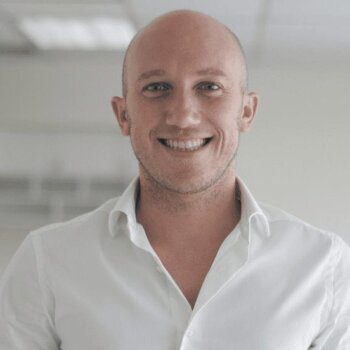Alfred Chong is the Founder and CEO of Nanoveu Pte Ltd. Mr Chong began his professional career in his garage with just 2 employees and US$1,000 of borrowed capital in building a Systems Integration company which was acquired by CompuCom Systems Inc. After the acquisition, Mr Chong took on the challenge to built CompuCom’s services’ infrastructure in the US and grew the services division into a US$ 100 million business.
Mr Chong moved back to Asia in 1997 and has since then led several American based companies such as Powercell, Capstone and Bowman in expanding into Asia. Mr Chong was CEO, Asia for Atex Media Command from 2004-2005, a global leader provider of solutions and services to the media industry, where he worked across-functional teams to develop software development efficiencies and improve operational processes for the region. Mr Chong also led satellite communications company THISS Technologies Inc., based in Singapore, and 1-2-1VIEW, a Digital Signage Company with built in audience measurement. The Singapore American Business Association in the United States named Mr. Chong the Entrepreneur of the Year. The San Francisco Chronicle named Mr. Chong as one of twenty-four foreign-born high technology “visionaries” who have helped to make the San Francisco Bay Area the world’s technology leader.
Mr. Chong received both his B.S. degree in Computer Science and his M.B.A. degree from the University of San Francisco.
The Asian Entrepreneur interviews Alfred Chong today about his enterprise.
What exactly is Nanoveu?
Nanoveu is a leading provider of thin film based nano structures that can shape our vision when viewed through modern day, high resolution smart devices. Using a patent pending process of manufacturing, Nanoveu has produced a technological breakthrough by delivering distortion free 2D/3D video, photos and Games on smartphones and tablets.
How did you come up with the idea of Nanoveu?
Just about any idea can translate into a business if there is good commercial merit and if one can create a value proposition that consumers can relate to. I am sure many of us entrepreneurs have been involved in many hair brained ideas but finding a product with a raw consumer appeal is very powerful. Finding one that is grounded on patent pending know how is even more powerful. Now couple that with a team of talented inventors and you have a secret for success.
Now ever since we are four months old we see the world in 3D. Yet when Tvs, smartphones and Computers came, we became used to 2D – even though some would contend that the virtualisation of the graphics mimic 3D. Therefore, a technology that can provide 3D to smartphones, tablets and eventually Tvs in a very low cost piece of plastic would do well. This is how the idea evolved and is now growing to include mobile games. Nanoveu is based on leveraging nano imprint technology that is state of the art; costs millions of dollars to set up and even more difficult realise.
At Nanoveu, we pride ourselves at coming up with a series of products from 3D to security that will leverage on this technology to provide consumers with technology that is affordable, unique and state of the art.
Could you walk us through the process of starting up Nanoveu?
Great things happen by chance, by luck and the coincidentally. IMRE and Temasek had created a technology that had tremendous potential. Built on Nanotechnology and fortified with patents, I was fortunate enough to take a look at its prototype and it was all execution thereafter. From rapid prototyping to technology licensing, to convincing investors to invest in the company, it all happened within months.
From the time we incorporated in November 2012 till April 2013, we worked out production, funding, marketing and started shipping on April 28th, 2013. Since then we have shipped over 15000 units and orders remain strong. Perhaps the biggest challenge like any startup was in the funding but with such a great idea, it was somewhat easier. We are still only angel funded and have not gone to the Venture Capital community, although I suspect this would be our next evolution. .
How has it been like managing the business since?
There were many “firsts” in this endeavour. The first time Temasek Poly ventured into a spin off. The first time such a technology had reached commercial maturity. The first time a smartphone had nano technology embedded as a film protector. The list goes on and we encounter problems from technical to human resource to market nuances each passing day. Exciting as it may, I know that writing a book defining this chapter would be inevitable.
One of the biggest challenges in the raw potential on the technology. We have opportunities in security, in 3D, in content, in partners large and small – all pulling us into multiple directions. Yet we need to remain focused, buckle down and get our revenue in line so that we can then go to the next project and the next. We have a great set of industry veterans all lending a helping hand. Created, Invented, Crafted all in Singapore.
Did you find anything particularly difficult during the startup?
Throughout the journey of creating Nanoveu, you will often ask yourself what did you get yourself in. Many friends asked how I got the energy to do this at this stage of my life. Most deals at inception were based upon a handshake.There is no hard and fast science to it all. You just face the challenge head on and then try to solve it as best as you can. Those closest will know that there were moments when it seemed that it could have nearly been the end. For example, I had spent over 8 months working the business without even knowing if I was able to secure the technology.
There were also times when we were sidetracked by reaction of different industries interested in our technology and its applications, and our unique manufacturing process. We were pulled into so many directions, each opportunity too vast to comprehend. By setting up a solid team that was able to multitask and support the various lead was the only solution.
Did the consumers accept the products initially?
Definite yes, initial reaction was very positive amongst early adopters of the technology. We have just started video taping their reaction but the positive wows of our consumers give us the impetus to succeed. It is almost like fuel to our success. They loved experimenting with our technology and pushed it to its limits. Customers gave us invaluable feedback that we have used to develop the product to a higher level. – It has been gratifying that statistically, after showing this product to thousands, 95 out of 100 people that see the product just simply say “wow”. We pull the longest lines in any trade show. Consumers just cannot get over how we can do all of this with just a simple piece of plastic at 0.1mm thick.
What is your strategy against your competition?
There is competition in the 3D display space, but competitors so far are unable to use nanotechnology to produce the high quality 3D content we have been able to. – We keep tabs on competition, but we are the leaders in this field from a tech and design perspective. Our strategy is to continue to innovate and execute. Competition is encouraged because it is a good sign we are moving in the right direction, since glasses-free 3D is a young industry.
What can you tell us about the industry?
3D in the past has always been very expensive. This is especially true for glasses-free 3D. We have disrupted the industry by producing highly affordable 3D. This is due to our patent pending iteration process that allows us to cut our R&D on new moulds by over 100 times what our competitors would spend. We are in essence changing consumer behaviour and in that lies the challenge. Consumers are used to 2D on their screens. No one is asking for 3D because they do not know it exists. Yet when we show our product to consumers they are amazed at our technology. Additionally, you often up against companies with balance sheets an resources much more than we do. Yet, marketing is an expensive proposition that can run tint multi millions of dollars. Therefore forging smart partnerships, strategic alliances and creating viral products is the only way around that. Any revolution and a game changer requires vision, fortitude, perseverance and just sheer unrelenting drive that requires you to get up everything you get knocked down.
How have you managed to stay relevant in this industry?
In this instance the affiliation with the various Singapore institutions such as Temasek Polytechnic, and A Star has helped us stay current in this industry. We are called to participate in workshops, seminars, shows. We are indeed to be a Singapore company where we can leverage on the foray of Government related grants and programs to stay current.
What are your future plans for Nanoveu?
For any startup the short to mid term are the most important. Most startups do not evolve to realise their long term plans. For us, the Long term can be put into several buckets – Continue expanding our product range to include Android smartphones and tablets and become the standard must have protector that couples in 3D. This can naturally evolve to being adopted in every smartphone and table.Continue innovating to make 3D a must have instead of a nice to have, especially for Games. Develop similar products for smartphones and tablets that use our patent-pending manufacturing process.
In 2014 Q1, Eyefly3D will be releasing the iPad screen filter which will be a game changer. Expanding into other lines of businesses such as security that is built around nano technology and our patent pending know how.
If you could start all over again, would you change anything about your approach?
Hindsight is 20/20 and even at our infancy we have made mistakes that clearly we would not have done. This stems from all facets such in marketing, production and manufacturing, fund raise. We had made some remarkable speed to market milestones in releasing a product barely within 6 months from our incorporation. However I would have liked to introduce one product every other month. Biggest lesson learnt is the sheer magnitude of what it takes to market a product worldwide.
What do you think about startups in Asia?
I have been fortunate to be involved in startups in Asia and in the US. From dot com to non dot com. From IT to Power technologies. The fundamental distinction that an Asian startup face is in the access to capital and the VC community in the Bay area. The “first job syndrome” is clearly the biggest obstacle. No one wants to give you monies unless you find the first investor. This is somewhat easier in the US and certainly both in size, access and follow through. That being said I do not think that what I am saying is new and everyone knows this.
What Asian startups have in contrast is that we have the sheer critical mass in numbers. With over 2 billion people throughout Asia, startups will face a tougher battle but the ones that make it have stronger fundamentals, stronger resolve to succeed and a survival DNA that would overcome the trials and tribulations of any company.
What are some personal principles that guide your career?
People, people and people. Create a larger pie. Share it with good people and execute to the best that you can. Create culpability. Hold them to it and execute. Never be shy of asking for help. Never be shy to learn. Never be shy to jump on an opportunity.
What is your definition of success?
When you can draw a smile from ear to ear from your shareholders and employees upon a successful and very successful exit.
Why did you decide to become an entrepreneur?
The definition of an entrepreneur is over rated. When I ask my 10 year son what he wants to be when he grows up, he says he wants to be a businessman. What does that mean? The definition of an entrepreneur is akin to one of a businessman. It is nebulous and can take many forms.
The true test of an entrepreneur is how well you can take stress. Think of the worst situation. Multiply that a hundred times and see if you do not hyperventilate. Think of a situation where you do not know how to make payroll not only for yourself but for your 300 plus employees. Or now you can pay your vendor. Do all of this with an asset base of being very very poor. If you can then take that well then you are an entrepreneur. My path to being an entrepreneur evolved by instinct. When I could not afford to buy my first computer, I had taken on three jobs to for it. When everyone wanted a computer that I built, then I made thousands of it and sold it at a good profit. Seeing the path to success was what I do best. I am not right always but on the ones that I do, they do well.
What do you think are the most important things entrepreneurs should keep in mind?
Failure is not an option. There is no such thing as failure and you build solutions to every problem. You find them or you could crawl into a corner and sulk.
Any parting words of wisdom for entrepreneurs out there?
Opportunities are bountiful. There are many smart people out there. Most probably smarter than you are. However if you keep an open mind, listen to as many smart people, and then act on it, then you will succeed. One common trait of very successful and smart pioneers is that if you can get timeshare with them, they will impart invaluable advice freely. Accept the advice with humility. Note they are most likely smarter than you are. If they affirm what you sense then you are on the right track. If they do not, then something needs to be re-callibarated. Do this soon. And succeed.
Connect:
Eyefly3D Website: http://www.eyefly3d.com
Nanoveu Website: http://www.nanoveu.com
Twitter: www.twitter.com/achong888
Linkedin: http://www.linkedin.com/profile/view?id=162103






























